Hackathon Update: See Progress From March & April!
By Jasmine Mon & Grace Goodhue, members of The Mustangs
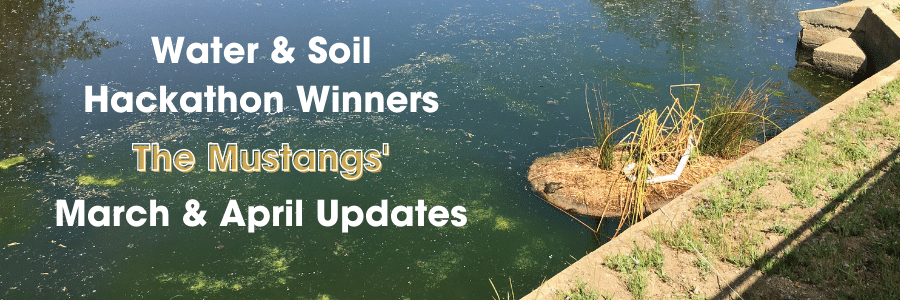
Hello TCI Readers!
We hope you’ve seen our first blog post by now and seen what our project stands for! But, if you haven’t, give it a read soon! For now here is a quick and brief summary: we won the TCI Water and Soil Hackathon in January 2022 after proposing our floating wetland idea, a great solution to eutrophication. It also serves as a passive system for water remediation.
During these months of March and April, we compiled a list of materials we need to buy to make our second floating wetland. Additionally, we sketched a blueprint of what we envision our floating wetland to look like.
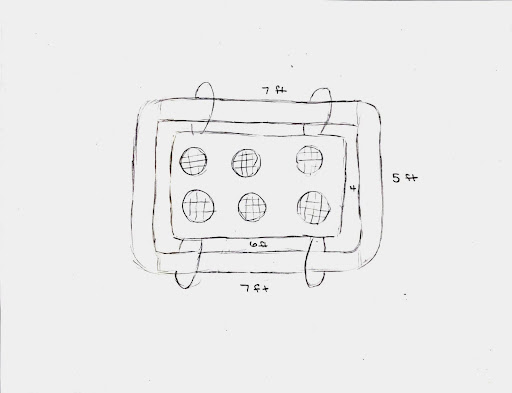
After researching for supplies and further brainstorming, we decided for the wetland to be in the shape of a square. The PVC pipe frame would be 5 feet by 5 feet.
We intend to use PVC pipes as a base for our wetland. Then we’ll wrap the frame in burlap fabric. We decided to use burlap because it is able to retain moisture (without sinking the island), which is beneficial for a wetland. In the middle of the wetland, we will cut a hole in the burlap and put multiple aquatic plant basket(s). Then, we will fill them in top soil and plant vegetation. Some of the plants on our list include Blue Moneywort, Water Iris, and Varigated Sweet Flag. We will tie the baskets to the outer frame using zip ties or rope.
As part of our bi-monthly update, here are some photos of our first floating wetland and our eutrophicated pond.
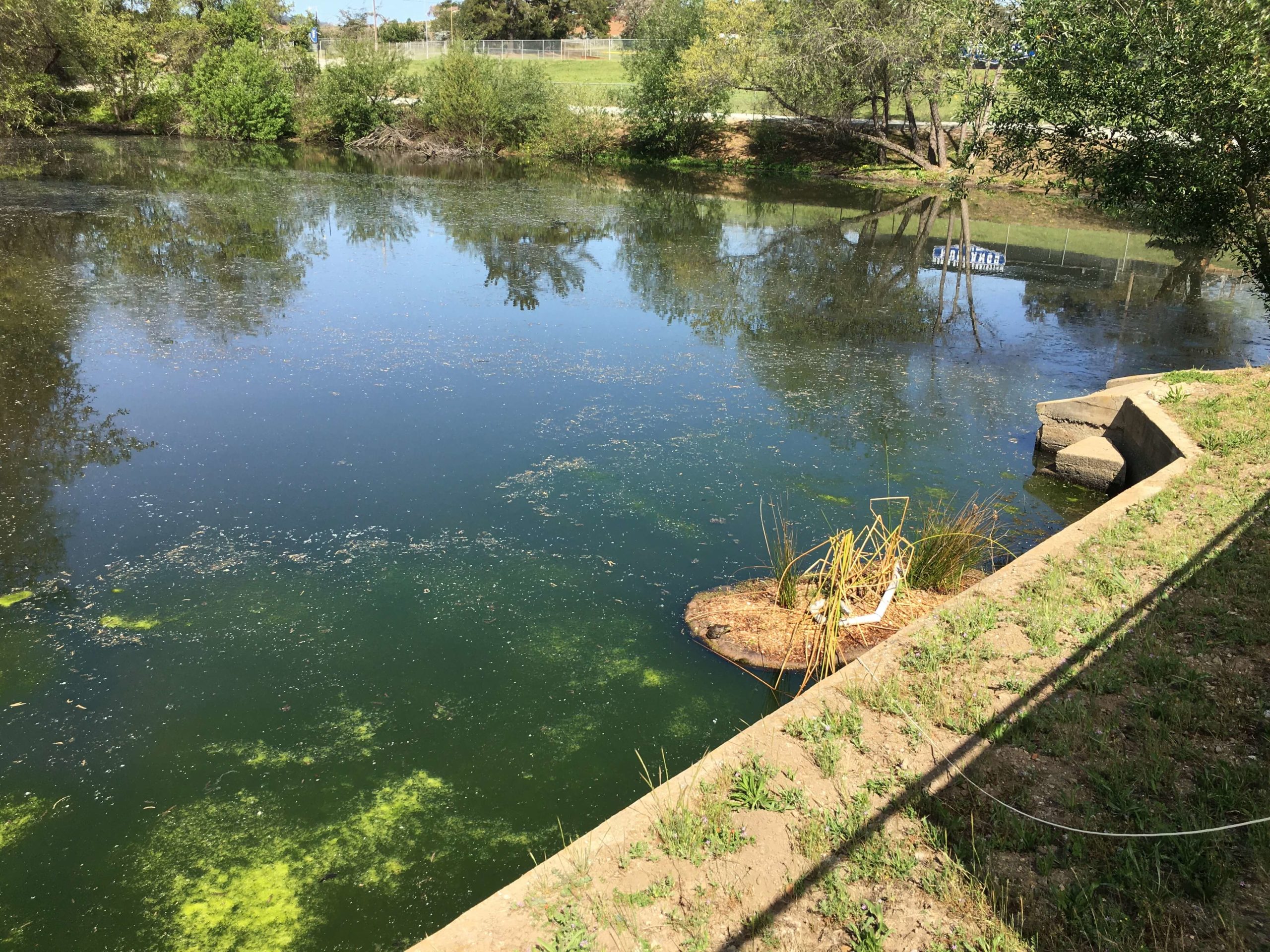
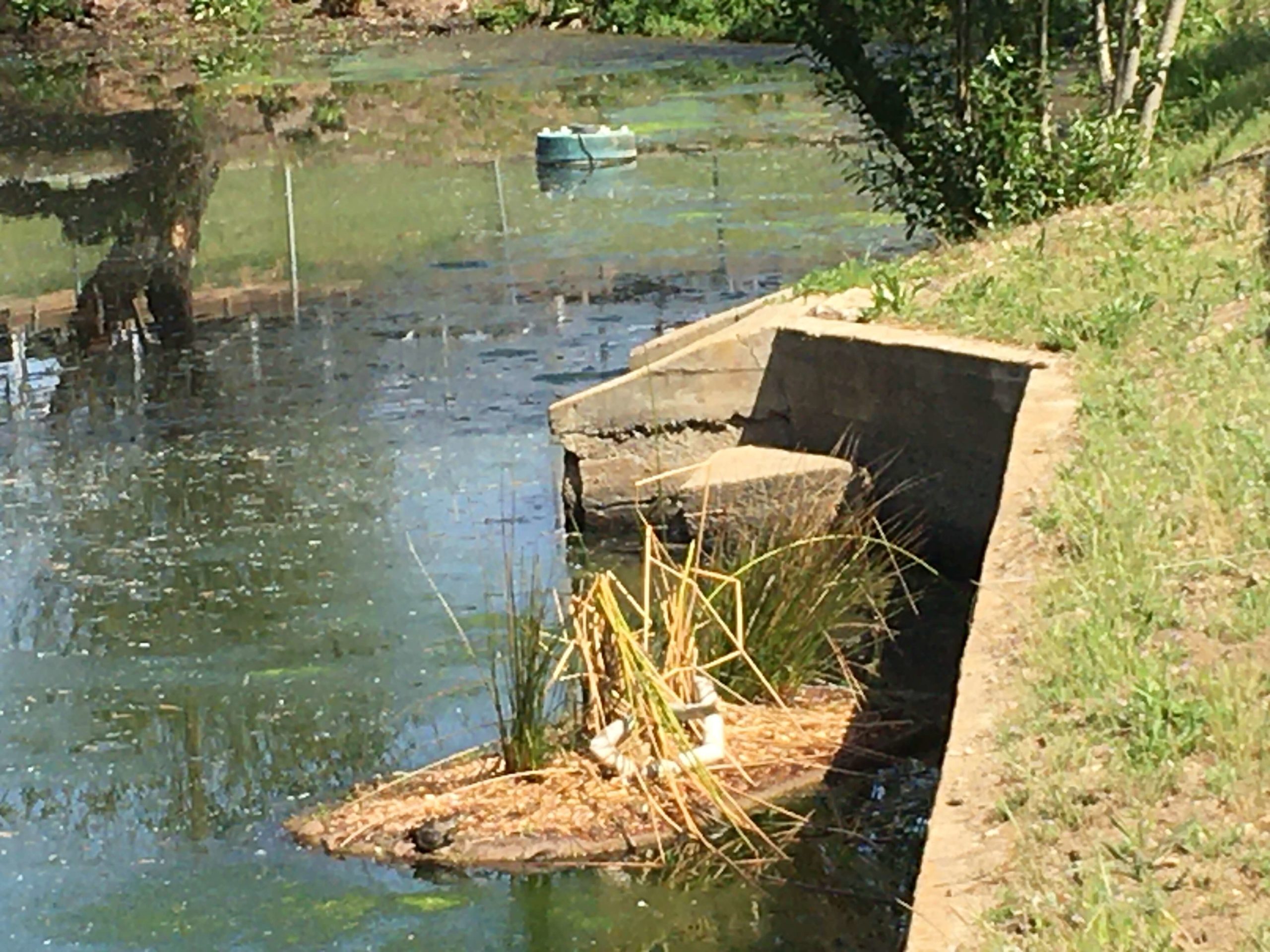
As of now, our pond still suffers from eutrophication. However, floating wetlands are made to diminish eutrophication severely, which is the main benefit and reason for our use of them. Once we place more floating wetlands in the pond and wait for them to start working, the eutrophication will decline.
Floating wetlands also benefit the wildlife in and around the pond. Caught in the photo below is an amphibian using the wetland as a habitat. Because we used mulch in our wetland underneath the wood chips bugs are attracted to it. The bugs serve as a food source for amphibians and the moist mulch on the wetland provides the amphibian with a great place to live.
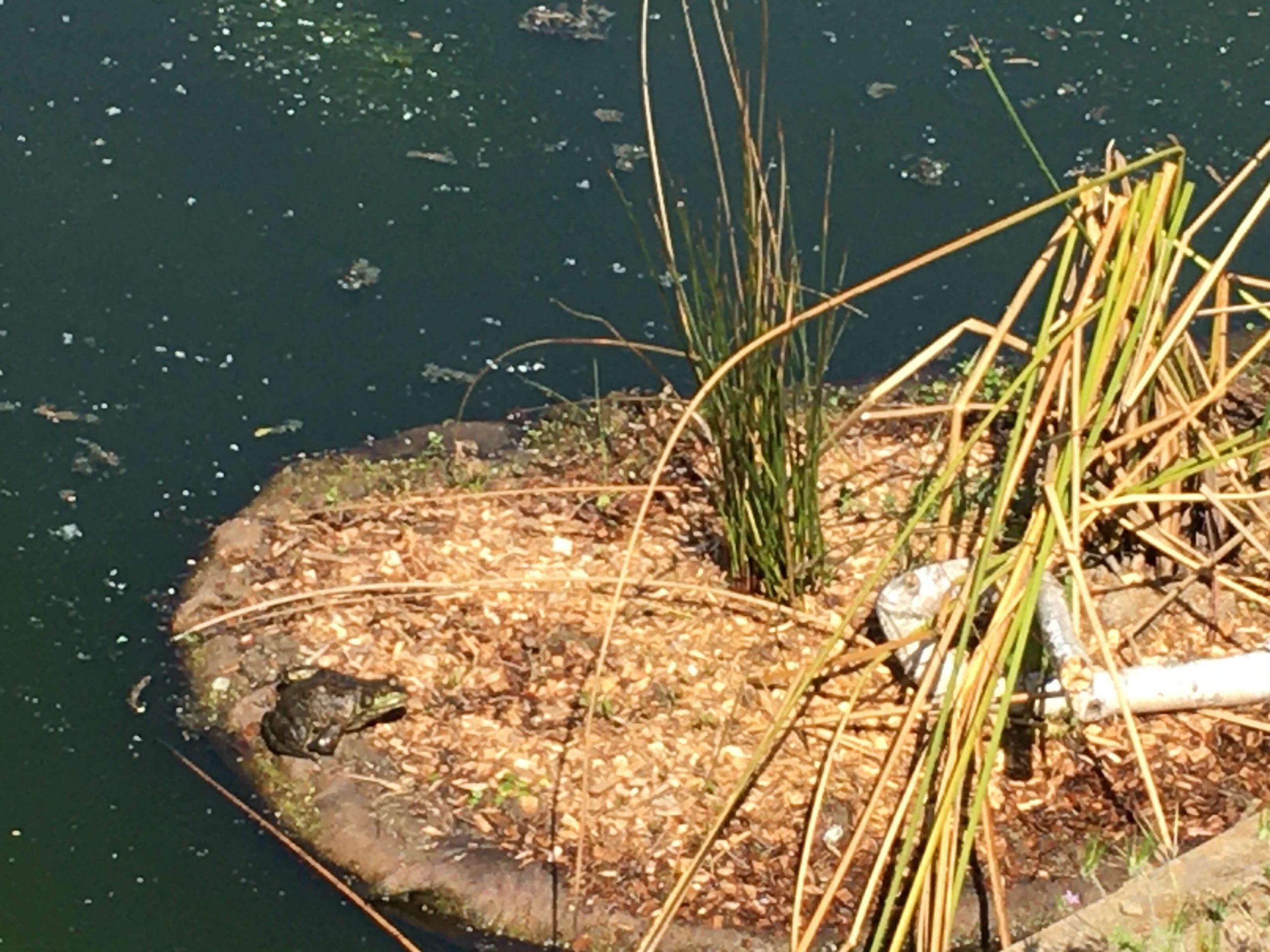
Floating wetlands can create a big impact on the environment and can be extremely beneficial. Hopefully you learned the benefits of floating wetlands in this blog post as well as how a basic construction of one looks like.
Stay tuned for more bi-monthly updates!
– The Mustangs
